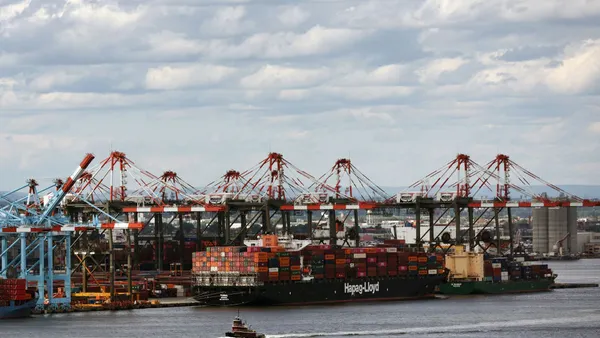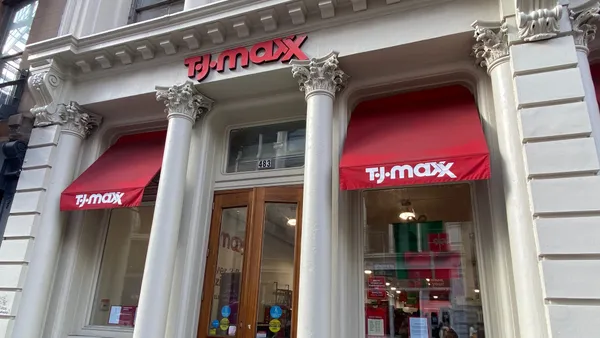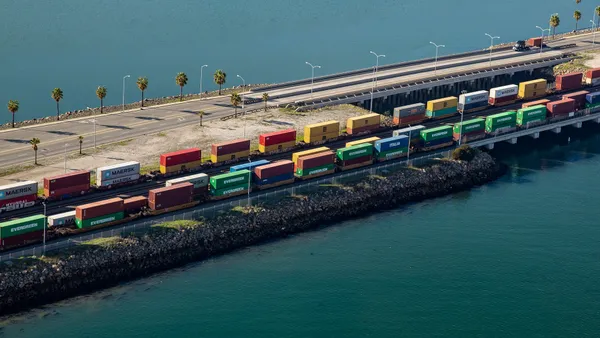LONG BEACH, Calif. — When David Casey’s kids order a pizza through the Domino’s app, they get real-time data and end-to-end visibility on the status of their pie.
Data is instantly available on the time the order was processed, the time it went out for delivery and several steps in between. Casey, the senior director for port solutions at GE Transportation, joked his kids even know when the pepperoni slices are being placed on the pizza.
Real-time visibility isn’t limited to Domino’s pizza. Most e-commerce orders come with a tracking mechanism that enables consumers to play the part of logistics manager.
So why, Casey rhetorically asked attendees at a panel discussion at TPM 2019 in Long Beach, California, can’t the same level of visibility exist for intermodal freight shipments throughout their journey, from a port in Asia on a container ship to a truck to a warehouse?
"Our planning capabilities are hindered by a lack of visibility," Tony Heldreth, vice president of supply chain for Owens Corning, said during the panel discussion. Owens Corning produces insulation, roofing and fiberglass composites.
Heldreth’s sentiment appeared to be a common thread shared among shippers at TPM, who lamented a lack of schedule reliability impedes their ability to accurately forecast and manage inventory.
Heldreth said his company wanted better visibility into its imports, not only for its internal planning but also to be able to notify its customers on the status of their supplies.
Real-time data is generally available throughout a vessel’s journey across a Transpacific trade route, with GPS conveying the ship’s location.
The "black hole," as Casey described it, comes once the ship docks at a port, and shippers, along with their transportation partners, lose sight of the exact location and status of their container.
The data black hole in the past usually lasted only a day or two as cranes offloaded containers from vessels, according to Casey. But with large megaships carrying thousands of TEUs, shippers can be in the dark about their containers for as long as five days.
GE Transportation, together with tech startup project44, launched the Port Optimizer, which aims to gather and share data across all parties in the intermodal supply chain: shippers, terminal operators, carriers, truckers, railroads and chassis providers.
"The key part is to normalize the information," said Thomas Barnes, president of project44. Any multimodal visibility tool must be able to ingest data in various formats, whether it’s RFID, sensors or other forms of tracking.
Port Optimizer’s overarching goals with the data are to improve visibility and increase speed of shipments from one mode to the next.
But each player in the supply chain wants and needs different data for its own efficiency, so it’s not enough for the data to simply exist. Instead, the data needs to be broken up into actionable information for each constituent.
Shippers, for example, want information specifically related to inventory and the status of their goods in transit. Railroads, on the other hand, want data on ship arrival times.
Heldreth said through the Optimizer, Owens Corning has seen the greatest value from knowing when something is delayed, allowing the company to plan accordingly and notify downstream customers.
An end-to-end visibility tool’s success relies on buy-in and willingness to share data from all stakeholders. Casey said all terminal operators at the Port of Los Angeles are participating in the Port Optimizer.
But according to Heldreth, shippers need to be the drivers pushing for intermodal visibility. "If it’s not us," he said, "then who?"














